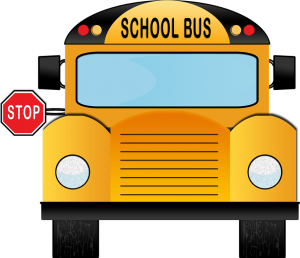

Technological transformation over the years in the world has been formidable. The integration of technology with different industries around the globe has catapulted the concept of innovation. No industry now is bereft of this revolution, and is embracing digital transformation in its business practice. Telematics is one such technology that has taken the freight industry by storm. You can read more about it here.
From shipping to logistics, the wingspan of telematics covers it all. The word ‘Telematics’ comes from the amalgamation of two words: Telecommunications and Informatics. It essentially means exchange of data and information by electronic channels from remote objects. In case of the shipping industry, the remote objects are vehicles on the road, or in warehouses. This system records all the pertinent information regarding vehicles. Along with that, it is tasked with sending, receiving, processing and storing the information. This is carried out with the help of telecommunication channels, such as GPS or a cellular network.
Make your business more profitable with LocoNav’s Telematics
Many fleet management software are now deployed over telematics. It provides the facility of monitoring speeds, acceleration, fuel consumption, idling, braking habits, location, engine health, to name a few. The telematics tools are often incorporated with cargo dispatch and scheduling. The idea behind this practice is to maintain absolute transparency between the stakeholders, namely the consigner, the driver and the customer.
An important point to take note of, however, is that telematics is not simply limited to the freight industry. Many sectors are now evolving, all thanks to telematics. Fundamentally, telematics is for the purpose of fleet management. However, the shipping industries are not the only ones that can enjoy the benefits that come with this technology. In this article, we talk about how 3 different business verticals can also take advantage of this dynamic technology.
Rescue Agencies

Rescue agencies have a huge role to play in general public safety and crisis redressal. These emergency services are of various types: some work to address a particular kind of emergency, whereas others work to rectify ad hoc calamities.
When people’s lives are at stake, such agencies are the ones that require telematics in their system the most. With the help of this technology, the vehicle tracking devices installed in the ambulances, fire trucks and mobile health vehicles can be of great help in case of emergencies. Telematics can help such units plan their course of action and routes to take in response to distress calls. Hence, they can avoid unnecessary roadblocks and traffic and can reach to the aid of people as soon as possible. Telematics can also be pivotal in maintaining data pertaining to emergency responses, and can thus help the authorities improve their services, if needed.
The healthcare system in India is on the rise, and is expected to grow exponentially in years to come. However, statistically speaking, the rural population of India does not have even half as much access to healthcare facilities as their urban counterparts. Moreover, other agencies like the fire brigade also have a tough time manoeuvring the rural areas of India due to lack of GPS facilities. Telematics can change the face of rural India, and can improve the standard of healthcare and emergency responses in this sector.
Quick read: How Telematics Can Be The Key For Global Growth
Quick read: Telematics: Problems and Solutions
Hospitality Industry

When we talk about the Hospitality sector, in terms of Telematics, the food and beverage vertical requires the most attention. The ferrying of items from vendors to restaurant kitchens needs to be quick and efficient, since a large part of the population throngs to hotel chains and restaurants. Due to increasing urbanisation, growing middle class and emergence of eating-out as a vital experience, the volume of people dining out is bound to rise further in years to come.
Along with that, there is a shift in the eating patterns of people as well, with home deliveries making lives easier. The home delivery service is a matter of convenience to the populations, and thus they gravitate towards food delivery apps. This is where telematics comes into play. As the service manager, you would be able to keep an eye on your delivery crew, ensuring that timely and correct deliveries are being made. And as the consumer, you would be updated with the estimated arrival time of your order, as well as getting real-time updates about the position of the delivery executive.
Service managers can utilise telematics to make sure that the food being delivered, either to restaurant kitchens or directly to the customer, is fresh and kept at the right temperature. It allows the manager to monitor and regulate the temperature of the vehicle, especially when it has a refrigerated transport box attached to it.
Educational Ecosystem

Educational institutions are in dire need of telematics, with the rise in child abduction rates in the country. And as an educational institution, the safety of the student lies in the hand of management. The school buses that ferry the children must be equipped with such technology that it puts the mind of parents, and the school authorities, at ease considerably.
When a vehicle tracking system is installed in a school bus fleet, because of telematics, the school authorities can keep an eye on driver behaviour. They will be instantly notified in case of rash driving, hard braking or unnecessary idling. Moreover, the parents can also track the position of the school bus. With it, they can be sure that their child is safe and is where they are supposed to be. The parents can also be notified instantly in case of any delays or breakdowns during the bus’s journey. And so, they can stay abreast with the position of their child.
Telematics also favours the educational ecosystem in terms of cost. With this technology, the school management can regularly check up on the health of their buses. They will be notified regarding the engine health, and fuel consumption rate. Moreover, they can be timely alerted regarding upcoming maintenance activities. As it stands, school buses need to pick/drop children at various parts around the town. With telematics, the authorities can also indulge in route optimisation. This will allow their drivers to take the most optimum routes to minimise fuel wastage and save on time and money.
Also read: Top Questions About Telematics Answered